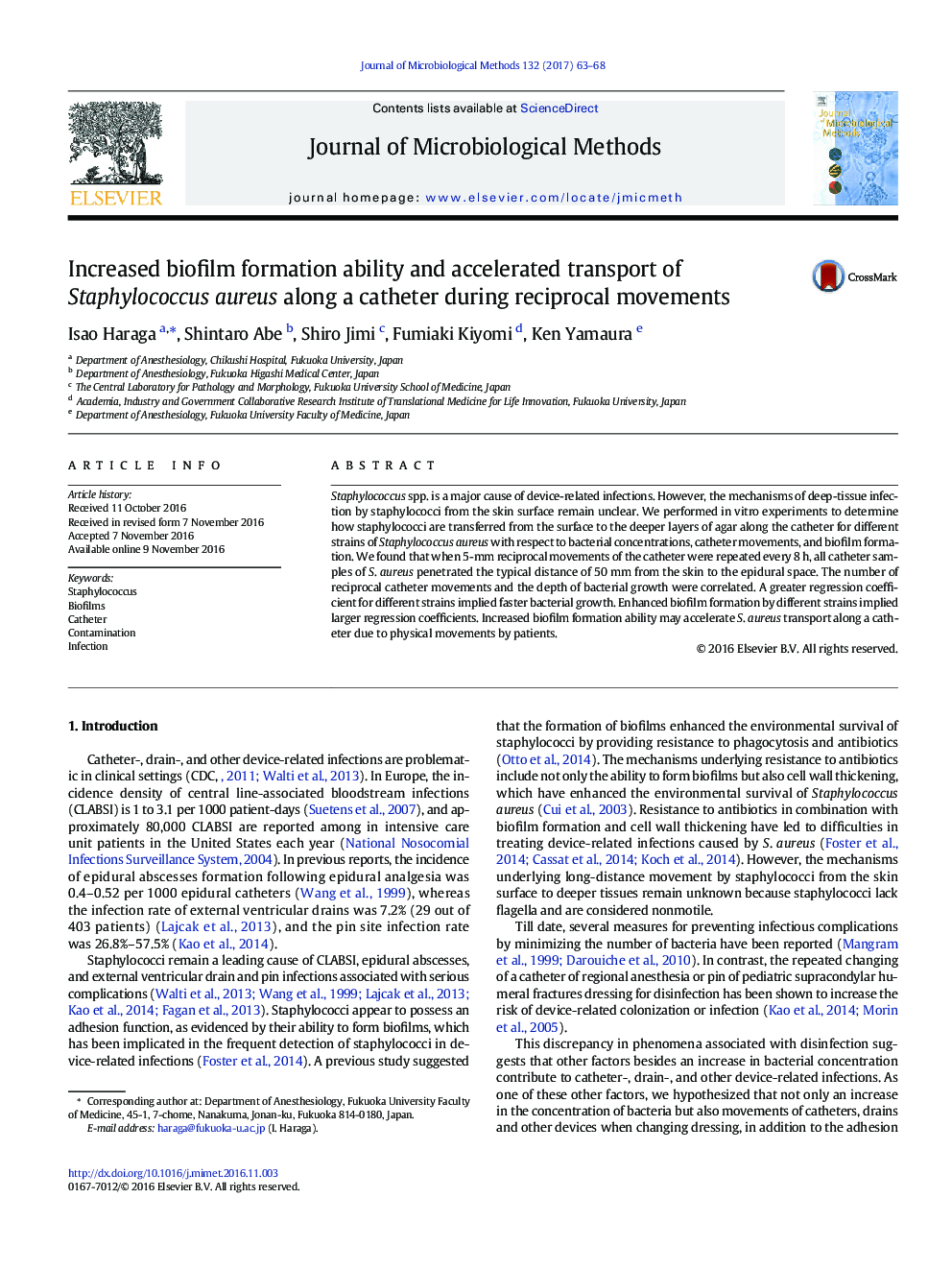| Article ID | Journal | Published Year | Pages | File Type |
|---|---|---|---|---|
| 5522331 | Journal of Microbiological Methods | 2017 | 6 Pages |
â¢Increased reciprocal catheter movements promoted deep bacterial growth.â¢There were significant differences in the transport rates of the different S. aureus.â¢Increased biofilm productability accelerate S. aureus transport along a catheter.
Staphylococcus spp. is a major cause of device-related infections. However, the mechanisms of deep-tissue infection by staphylococci from the skin surface remain unclear. We performed in vitro experiments to determine how staphylococci are transferred from the surface to the deeper layers of agar along the catheter for different strains of Staphylococcus aureus with respect to bacterial concentrations, catheter movements, and biofilm formation. We found that when 5-mm reciprocal movements of the catheter were repeated every 8Â h, all catheter samples of S. aureus penetrated the typical distance of 50Â mm from the skin to the epidural space. The number of reciprocal catheter movements and the depth of bacterial growth were correlated. A greater regression coefficient for different strains implied faster bacterial growth. Enhanced biofilm formation by different strains implied larger regression coefficients. Increased biofilm formation ability may accelerate S. aureus transport along a catheter due to physical movements by patients.
